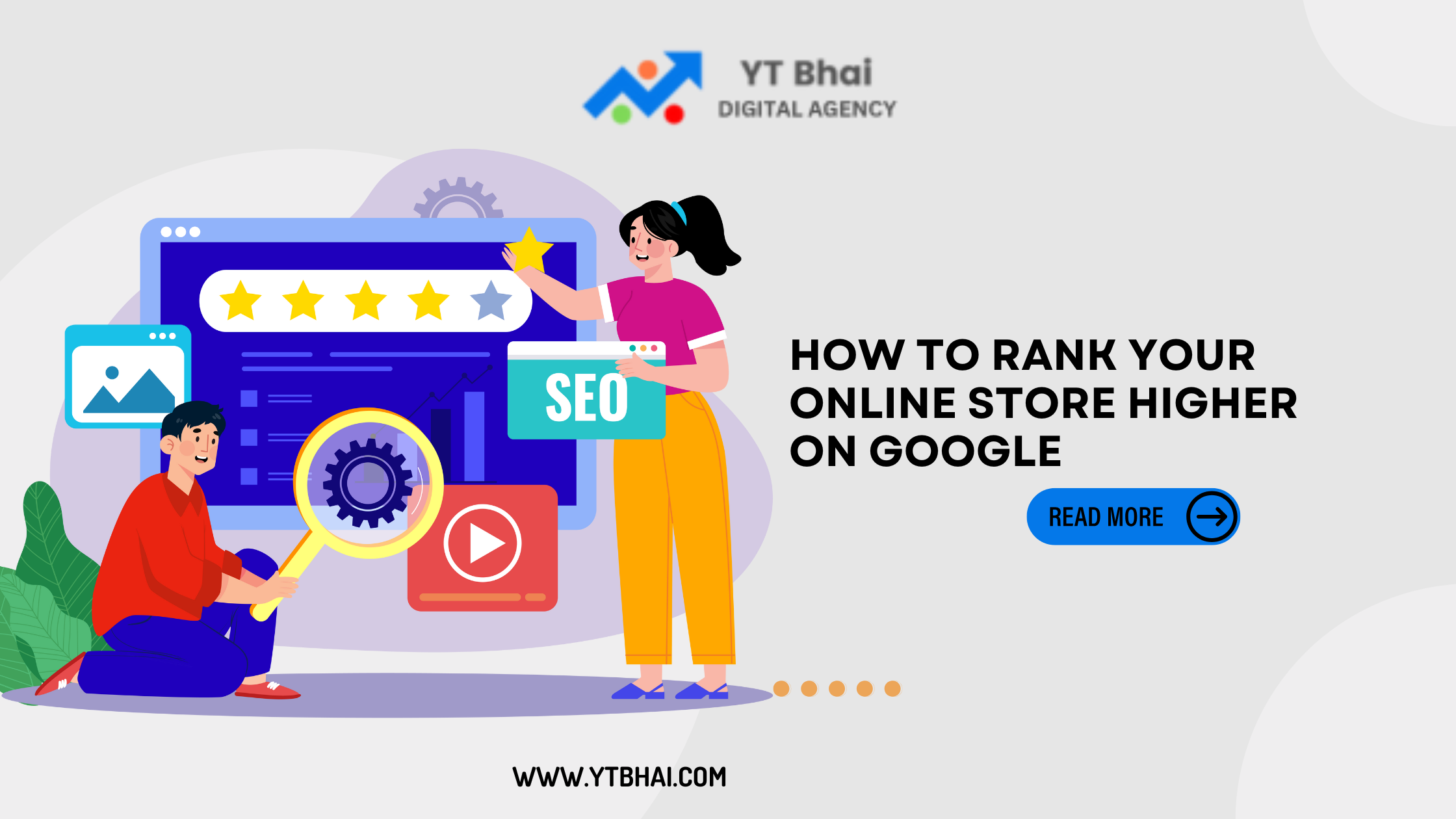
Ranking your online store higher on Google is essential for driving organic traffic, increasing visibility, and boosting sales. With more competition in e-commerce than ever, understanding and implementing SEO best practices is crucial. This guide will walk you through effective strategies to improve your store’s Google rankings and stay ahead of the competition.
Conduct In-Depth Keyword Research
Keyword research is the foundation of e-commerce SEO. It helps you understand what potential customers are searching for and how to optimize your product pages accordingly.
Best Practices for Keyword Research:
- Use tools like Google Keyword Planner, Ahrefs, or SEMrush.
- Focus on long-tail keywords (e.g., “best running shoes for beginners”).
- Analyze competitor keywords and identify gaps in your strategy.
- Include LSI (Latent Semantic Indexing) keywords to add context.
| Tool | Purpose | Best For |
|---|---|---|
| Google Keyword Planner | Keyword suggestions | Beginners |
| Ahrefs | Competitor analysis, backlinks | Advanced SEO users |
| SEMrush | Keyword tracking, site audits | In-depth SEO strategy |
| Ubersuggest | Long-tail keyword discovery | Budget-friendly keyword research |
Optimize Product Pages for SEO
Each product page should be well-optimized for Google to understand and rank it properly.
Key Elements to Optimize:
- Title Tags & Meta Descriptions: Include the primary keyword naturally.
- URL Structure: Keep it short, descriptive, and keyword-rich (e.g.,
/best-running-shoes). - Product Descriptions: Use detailed, unique, and keyword-optimized descriptions.
- Images & Alt Text: Optimize image sizes for fast loading and include alt text with relevant keywords.
- Schema Markup: Implement structured data to help Google display rich snippets.
Improve Website Speed & Mobile Usability
Google prioritizes fast-loading and mobile-friendly websites. If your store is slow, visitors will leave, increasing bounce rates and hurting rankings.
Ways to Improve Site Speed:
- Optimize images using tools like TinyPNG.
- Enable browser caching and content delivery networks (CDN).
- Minimize unnecessary plugins and scripts.
- Choose a fast and reliable hosting provider.
🔹 Check your website speed using Google PageSpeed Insights.
Build High-Quality Backlinks
Backlinks from authoritative sites boost your domain authority (DA) and improve rankings.
Best Strategies for Link Building:
- Guest Posting: Write articles for industry-related blogs.
- Influencer Collaborations: Partner with influencers for backlinks and social proof.
- Broken Link Building: Find and replace broken links with your content.
- Press Releases & PR Outreach: Get featured in online magazines and news outlets.
Leverage Content Marketing & Blogging
Content marketing helps attract organic traffic and improve rankings.
Content Ideas for E-commerce:
- How-to guides & tutorials (e.g., “How to Choose the Right Running Shoes”).
- Product comparison posts (e.g., “Nike vs. Adidas: Which is Better?”).
- Buying guides (e.g., “Best Laptops for Graphic Designers in 2024”).
✍️ Tip: Consistently update your blog and interlink with product pages to drive traffic.
Optimize for Local SEO (If Applicable)
If you have a physical store or local presence, local SEO can significantly boost rankings.
Key Local SEO Strategies:
- Optimize Google My Business (GMB) with accurate details.
- Encourage customer reviews on Google.
- Use local keywords (e.g., “Best shoe store in New York”).
- Get listed in local directories like Yelp and Yellow Pages.
Utilize Social Media & User Engagement Signals
While social media isn’t a direct ranking factor, it drives traffic and improves brand visibility.
Best Practices for Social Media Marketing:
- Share product updates, blog posts, and customer testimonials.
- Engage with users through comments, polls, and Q&A sessions.
- Use shoppable Instagram and Facebook stores to drive sales.
- Encourage social sharing to increase visibility.
Enhance User Experience (UX) & Reduce Bounce Rate
Google rewards websites with better UX and lower bounce rates.
How to Improve UX for E-commerce:
- Ensure intuitive navigation and easy checkout processes.
- Offer multiple payment options and clear return policies.
- Add trust signals (badges, reviews, and secure payment icons).
- Use clear CTAs (Buy Now, Add to Cart, Learn More).
Monitor & Analyze Performance with Google Analytics
Tracking your progress helps you adjust your strategy for better results.
Key Metrics to Track:
- Organic Traffic: Check how many visitors come from Google.
- Bounce Rate: Identify pages with high exits and optimize them.
- Conversion Rate: Track how many visitors turn into customers.
- Keyword Rankings: Monitor ranking fluctuations and optimize accordingly.
🛠 Use Google Search Console to track indexing and ranking improvements.
Conclusion
Ranking higher on Google requires a mix of SEO, content marketing, technical optimizations, and user experience improvements. By following the steps outlined in this guide, you can significantly increase your store’s visibility, attract more organic traffic, and boost sales.
📌 Start implementing these SEO tactics today and watch your rankings soar!
FAQs
1. How long does it take to rank an online store on Google?
It depends on your competition, keyword difficulty, and SEO efforts. Typically, 3-6 months of consistent SEO can yield results.
2. How important is mobile optimization for e-commerce SEO?
Extremely important! Over 60% of e-commerce traffic comes from mobile devices. A mobile-friendly site improves rankings and conversions.
3. What’s the best SEO tool for online store optimization?
Google Search Console, Ahrefs, SEMrush, and Moz are great for tracking rankings, keywords, and site audits.
4. Do product descriptions impact SEO?
Yes! Unique, keyword-rich, and detailed descriptions improve rankings and attract more buyers. Avoid duplicate descriptions from manufacturers.
5. How does blogging help e-commerce SEO?
Blogging boosts organic traffic, targets long-tail keywords, and helps in link-building—all of which improve your store’s rankings.
